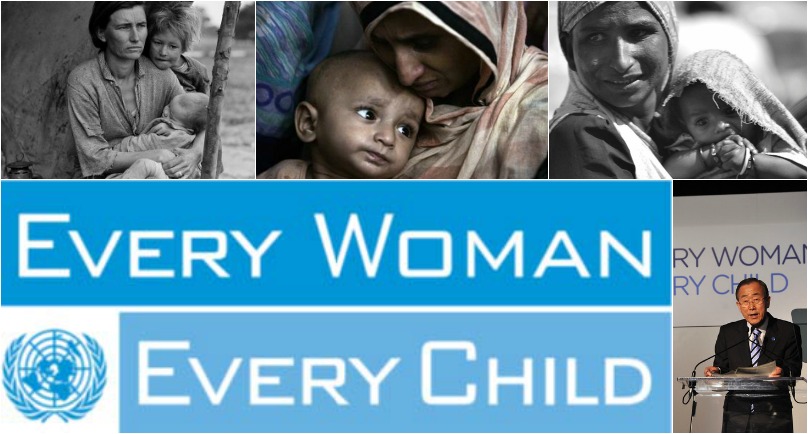The United Nations has looked closely at the health of women, children and adolescents, since the era of the Millennium Development Goals (2000-2015).
Progress had been made; maternal deaths decreased by 47 per cent and there was a 49 per cent decrease in deaths of children under five, since 1990, however more needed to be done.
Far too many women and children still do not have access to quality basic health services, and can’t participate fully in society.
In September 2010 UN Secretary General, Ban Ki-moon, launched a global movement called Every Woman Every Child. The movement looks at addressing major health challenges faced by women, children and adolescents by mobilising and strengthening actions by governments, multilateral organisations, research and academia and civil society.
The movement put into action a five-year road map, in alignment with the SDGs called Global Strategy for Women’s, Children’s and Adolescents’ Health with the aim of improving the health and well-being of these groups in societies.
“Women, children and adolescents are at the heart of the 2030 Agenda.”
“Continued commitment, leadership and action will be critical to achieving our goal of ending all preventable deaths of women, children and adolescents by 2030 and enabling them to reach their full potential,” said UN Secretary-General Ban Ki-moon.
According to the Global Strategy, 28 per cent of maternal mortality results from non-obstetric causes such as malaria, HIV, diabetes, cardiovascular disease and obesity; 1 in 3 children (200 million globally) fails to reach their full physical, cognitive, psychological and/or socio-emotional potential due to poverty, poor health and nutrition, insufficient care and stimulation, and other risk factors to early childhood development; and 1.3 million adolescents died in 2012 from preventable or treatable causes. The five leading causes of death in adolescent boys and girls are road injuries, HIV, suicides, lower respiratory infections and interpersonal violence.
Sadly, these millions of deaths are preventable.
The primary causes of these vary worldwide. They include poverty, gender inequality and marginalization (based on age, ethnicity, race, caste, national origin, immigration status, disability, sexual orientation and other grounds). Other influences are genetics; families, communities and institutions; underlying unequal gender norms within households; income and education levels; social and political contexts; the workplace; and the environment.
“Healthy women, children and adolescents are a foundation for prosperous communities and sustainable development within those communities. Everyone should have the opportunity to achieve their full potential by living healthy and worthwhile lives,” said Dame Meg Taylor, Pacific Islands Forum Secretariat Secretary General, now a member of the Every Woman Every Child High Level Advisory Group.
Every Woman Every Child hopes to magnify the importance of the health of women, children and adolescents by highlighting statistics and pressing health challenges faced by these particular individuals, and implementing the strategies referred to in the Global Strategy.
Ultimately, all stakeholders in this global movement contribute in saving and improving millions of lives, thrive to work harder and transform societies.
To see more on the work of Every Woman Every Child, visit their website.


